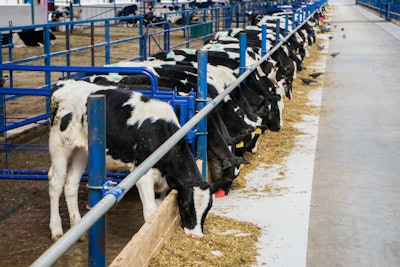
A mysterious disease that has been affecting cattle in the Texas Panhandle has been identified as a strain of highly pathogenic avian influenza (HPAI).
Texas Agriculture Commissioner Sid Miller said he received confirmation on March 25 from U.S. Secretary of Agriculture Tom Vilsack and the Animal and Plant Health Inspection Service (APHIS) that the mystery disease has been identified as HPAI.
Three dairies in Texas and one in Kansas have tested positive for HPAI. The Texas Department of Agriculture (TDA) is vigilantly monitoring this outbreak.
“This presents yet another hurdle for our agriculture sector in the Texas Panhandle,” Miller said. “Protecting Texas producers and the safety of our food supply chain is my top priority. The Texas Department of Agriculture will use every resource available to maintain the high standards of quality and safety that define Texas agriculture.”
The Texas dairy industry contributes roughly US$50 billion in economic activity across the state. Texas also ranks fourth in milk production nationwide and continues to be a key player in the dairy industry.
Miller wants to assure consumers that rigorous safety measures and pasteurization protocols ensure that dairy products remain unaffected by HPAI. The Texas dairy industry maintains strict standards to ensure the safety of every product.
“There is no threat to the public and there will be no supply shortages,” Miller said. “No contaminated milk is known to have entered the food chain; it has all been dumped. In the rare event that some affected milk enters the food chain, the pasteurization process will kill the virus.”
Cattle affected by HPAI exhibit flu-like symptoms including fever and thick and discolored milk accompanied by a sharp reduction in milk production averaging between 10-30 pounds per cow throughout the herd. Economic impacts to facilities are ongoing as herds that are greatly impacted may lose up to 40% of their milk production for 7 to 10 days until symptoms subside. It is vital that dairy facilities nationwide practice heightened biosecurity measures to mitigate further spread.
Texas dairies are strongly advised to use all standard biosecurity measures including restricting access to essential personnel only, disinfecting all vehicles entering and leaving premises, isolating affected cattle, and destroying all contaminated milk. Additionally, it is important to clean and disinfect all livestock watering devices and isolate drinking water where it might be contaminated by waterfowl. Farmers are asked to notify their herd veterinarian if they suspect any cattle within their herd are displaying symptoms of this condition.
“Unlike affected poultry, I foresee there will be no need to depopulate dairy herds,” Miller said. “Cattle are expected to fully recover. The Texas Department of Agriculture is committed to providing unwavering support to our dairy industry.”

















